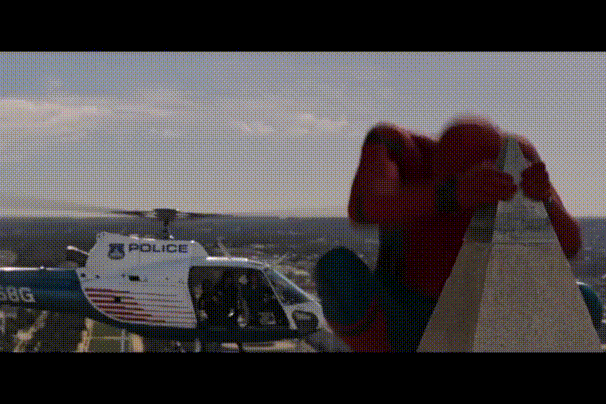I'm not going to lie. I am super pumped about Spider-Man: Homecoming. For now, my only outlet is to do something with the physics of Spider-Man. In this case, I'll look at the new web-wings seen in the latest trailer. (Watch it down below.) Oh ... spoiler alert?
Also, I should note that these web-wings are crazy. Some of the original Spider-Man comics showed him using them, even if they didn't always show him flying with them. You can just calm down about that.
What happens when Spider-Man jumps off a building? I can model his motion by assuming he has three forces acting on him---gravity, air drag, and lift. Let me say something about each of these forces.
- Gravity is essentially a constant downward force that is proportional to the mass of Spider-Man (well, at least this is true on the surface of the Earth).
- Drag. Imagine moving an object through a giant sea of ping-pong balls. Each collision between the balls and the object would exert a tiny force on this object. Now replace the balls with air---same thing. The air drag force increases with speed. More on this below.
- Lift. Again, imagine an object colliding with ping-pong balls, but in this case the balls bounce down after the collision. This bounce produces a force perpendicular to the velocity on the object. If you replace the ball with air, you get the lift force, which it depends on the angle of attack, the surface area and speed of the object.
Now for a nice force diagram of a gliding Spider-Man as he is aiming down. Yes, I am going to model him as a rectangle for now.

In this simplistic model (you can make this far more complicated if you like) the lift force is perpendicular to the velocity and the drag force is in the opposite direction of the velocity. To model the motion of Spider-Man with wings, I must have an expression for both of these forces. I will use:

These are just the magnitudes of the important forces. They are essentially the same except for CL (the coefficient of lift) and CD (the coefficient of drag). In both cases, the ρ represents the density of air (around 1.2 kg/m3) and of course v represents velocity.
But what about A? This variable represents the cross-sectional area of the person (Spider-Man in this case). It seems that the A for drag and lift should be different based on the angle of attack. However, it should be noted that I don't always know what I am doing. I've looked at several sources and it seems the thing most similar to what I am doing is the 2011 paper Trajectory of a Falling Batman (Journal of Physics Special Topics). In that, the authors used just one area for both drag and lift so I will do the same.
If Spider-Man jumps off a building, how far does he move while falling? How much of a difference would webbed arms make? It's not so simple to model the motion of Spider-Man since the drag and lift forces would depend upon the speed. Really, the only way to get his trajectory would be with a numerical model in which the motion is broken into tiny steps.
Now for some approximations. First, let me start with the surface area of a jumping Spider-Man. Using rough approximations, I get:

This yields an area of about 0.651 m2 with the arm wings and about 0.513 m2 without them. Now for some more estimates:
- Coefficient of lift = 1.45 (this is the value they used in that Batman paper)
- Coefficient of drag = 0.4 (again, Batman)
- Mass = 64 kg
- Initial velocity = 8 m/s (horizontal)
- One more assumption: I am going to say the angle of attack is constant so the drag and lift coefficients are always the same. Lift always will be perpendicular to the velocity and drag is opposite the velocity
Without further hesitation, I will jump right into a numerical model. There are some comments in there so you can use this for your homework assignment. Oh, remember to click the "pencil" to edit and "play" to run the code
In this model, the red curve shows the trajectory of Spider-Man with the wings and the blue is his trajectory without wings. I also print out the glide ratio. Since he moves with a constant velocity at the end of the run, his glide ratio would just be the x-component of momentum divided by the y-component.
Of course you should use the numerical model to answer some of these questions. Don't worry, you can't break anything. If you mess up the code, just reload it and start over.
- According to Wikipedia, a wingsuit skydiver has a glide ratio of around 2.5:1 (so in the program above this would print as just 2.5). Can you adjust the code to achieve this glide ratio? Hint: change both the area and the starting velocity.
- What if Spider-Man falls straight down? What would terminal velocity would he achieve with, and without, wings?
- How fast would Spider-Man need to run horizontally so he moves up, not down, when he first starts flying?
- Is it possible for Spider-Man to begin by aiming more downward so he picks up speed and can achieve level flight for a brief period?
- Can you make a better lift-drag model that takes into account angle of attack? You probably can, but it seems like low speed flight is pretty complicated.
Here's the whole trailer:
https://www.youtube.com/watch?v=xrzXIaTt99U

